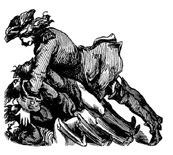
Revolt of the Ultra-Elites
ONE-PERCENTERS, COURTIERS, MAGICIANS & MINIONS
Some 30 years ago I watched as the parents of a Columbia University freshman reacted with incredulity to their daughter’s shrill peroration about the necessity to remove crosses from all public spaces so as “not to offend anyone.” Her folks had shown up in New York to fetch her home for Thanksgiving. They yearned for familial continuity. Instead, a chain of love snapped, perhaps irreparably, because within three short months, their daughter had become indoctrinated in the dogma of what we now call wokeness.
The young lady became a janissary, one of the active courtier participants in the revolution of the One Percent. The moniker derives from the Occupy Wall Street movement, which ostensibly targeted the ultra-wealthy. The target, however, responded with a revolution of its own, a revolution from above, the often violent convulsions of which are taking place primarily in city streets, on university campuses, and in corporate boardrooms.
The revolution of the One Percent has two aspects: existential and pragmatic. The former reflects a strategic endeavor to replace the moral order of the West with antithetical arrangements. The latter consists in a tactical and operational effort to perpetuate the One Percent in power.
To accomplish this, the civilizational context must be altered. Arguably, the most important impediment to the One Percenters’ domination is tradition, including American nationalism and Christianity. By destroying traditional America and remolding the ruins to their fashion, the One Percenters anticipate no serious challenge to their supremacy.
You May Also Enjoy
Scrutinizing bishops for not siding with abolitionists involves a failure to realize that abolitionism was associated with violence and lawlessness.
Abortion rates are sky high. Birth rates are at rock bottom. Americans are rejecting parenthood on a scale not seen before. What does this mean for our nation's future?
Catholics can provide the best intellectual framework for the "American proposition," but subordinating the Church to a larger project is an error.

